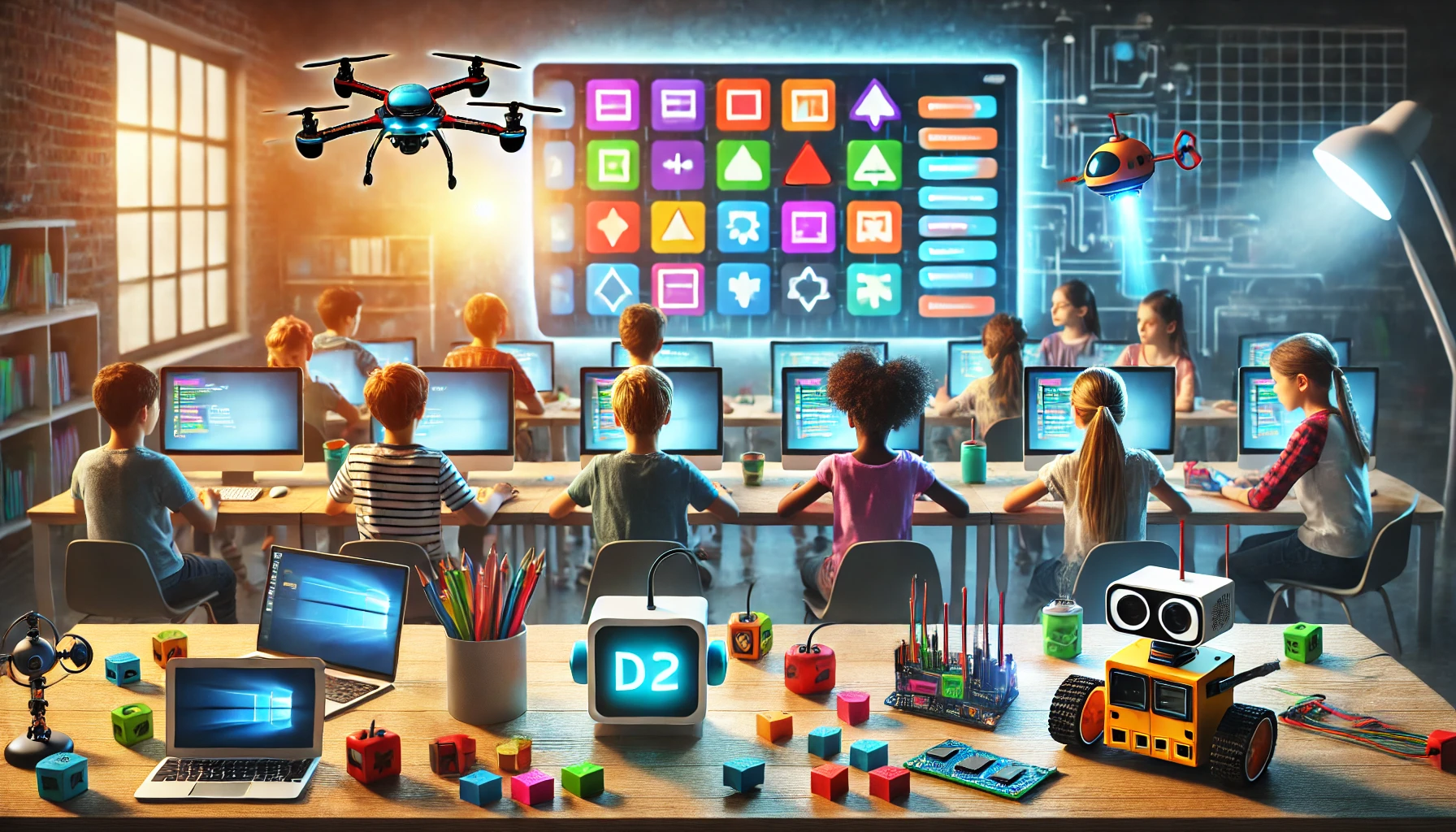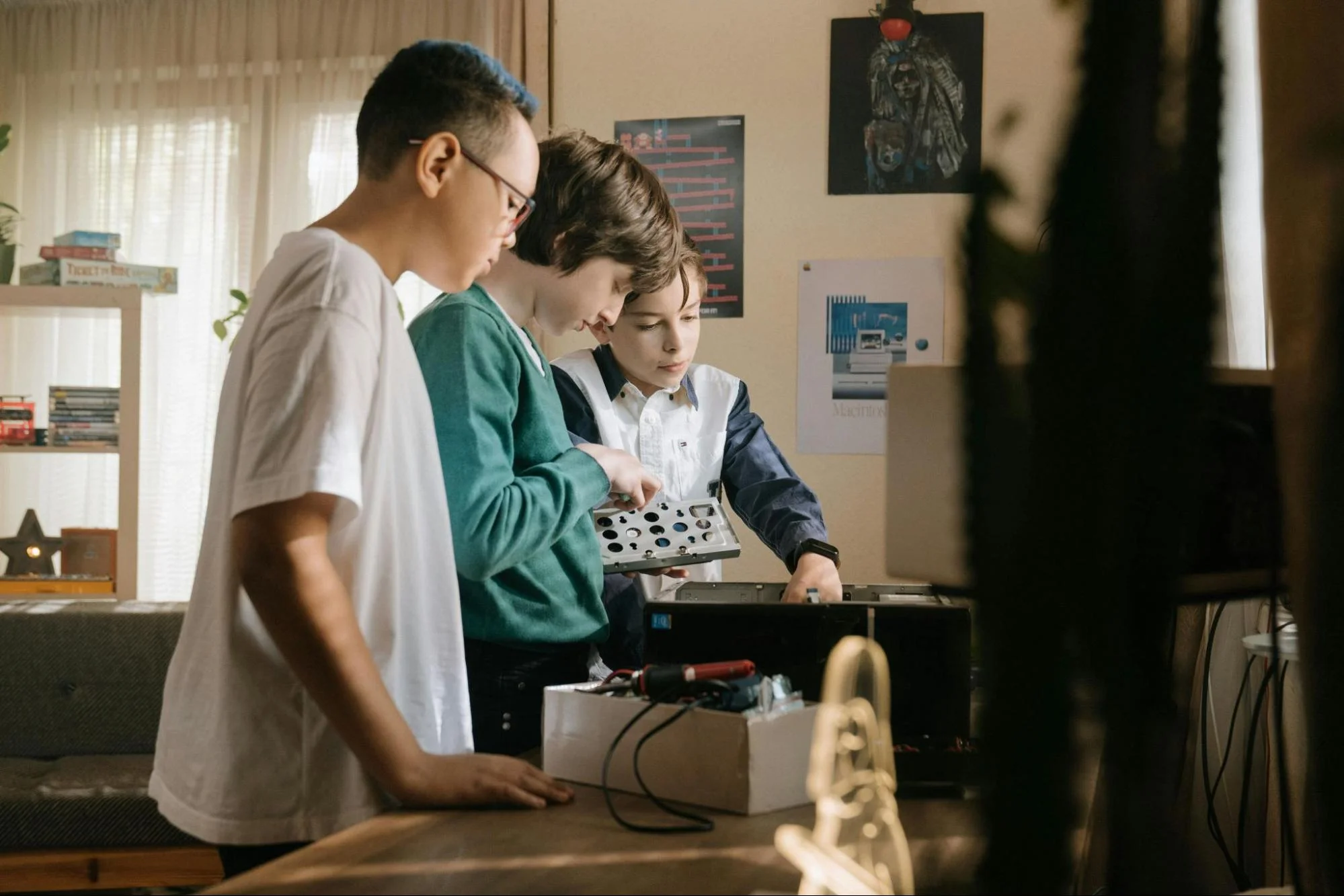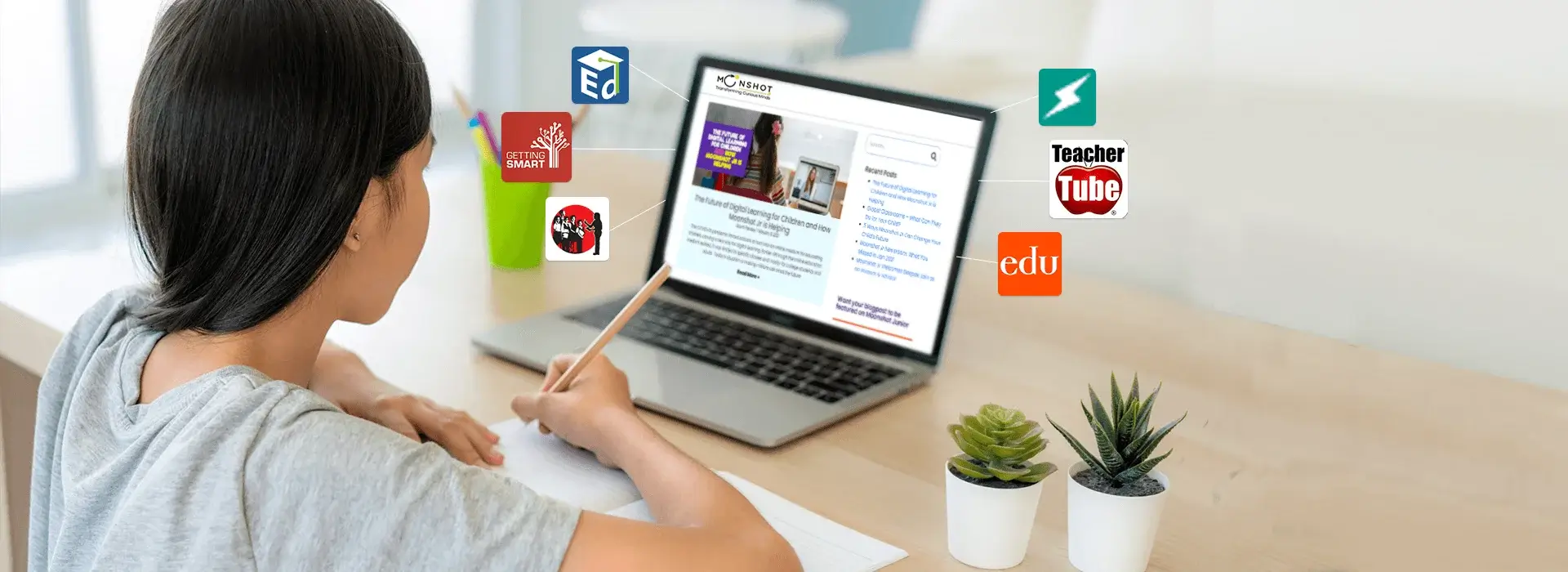
Update: This article was last updated on 14th November 2024 to reflect the accuracy and up-to-date information on the page.
Moonpreneur
Update: This article was last updated on 1st October 2024 to reflect the accuracy and up-to-date information on the page.
Block-based coding is the easiest, simplest, and most fun way for children to start coding. Block-based coding transforms the programming into a drag-and-drop process by just converting the text-based codes into visual blocks.
Block-based coding uses a drag-and-drop learning atmosphere, in which programmers use coding instructions known as “blocks” to create various animated stories and games for kids. Kids can gain a foundation in computational thinking through some text-based visuals.
In this context, blocks refer to chunks or pieces of instructions that a coder uses by putting them together to tell their program what to do.
Scratch Programming, for example, is a block-based programming language. When it comes to kids coding languages, it is one of the most popular options.
With this block-based programming, kids can make their imagination work by bringing those creations and imaginations to life with animated stories and games.
Recommended Reading: Coding for Kids: Why Should Every Child Learn to Code?
ᯓ Why should kids use block-based coding? ᯓ
For new kids, block-based coding helps to improve their learning ability. It also prevents errors and helps kids understand the program structure. Block-based coding assists beginners to focus on learnability.
Block-based coding has proven that it is effective and efficient. Some of the best block-based coding platforms include code.org, Scratch, etc.
「 ✦Block-based coding builds ✦ 」
⟢ 1) Games ⟢
These block-based programming languages are primarily used to build various games. Block-based coding can be either very simple or very complex, it is completely up to the coder.

Kids can create a variety of clicker games, chasing games, and even a few adventurous games.
ᯤ Clicker games: These games come under this category where a player clicks on things like popping balloons to earn points.
ᯤ Chase Games: The player in this game can chase another object or player. For example, online hide-and-seek games.
ᯤ Adventurous Games: This game is a little more advanced and the players must progress through multiple levels.
⟢2) Animations ⟢
 Beginners can begin by making an animation. Kids can make simple animations by using block-based coding. Kids can include a variety of characters, music, and movements in their animations.
Beginners can begin by making an animation. Kids can make simple animations by using block-based coding. Kids can include a variety of characters, music, and movements in their animations.
⟢ 3) Programs ⟢
 Various robotics kits for children use block-based programming languages for coding. This means that the child can write a program to make their robot move, perform tasks, make sounds, and so on. A few robotics kits allow kids to choose between two kinds of languages i.e.; block-based coding language and text-based programming language.
Various robotics kits for children use block-based programming languages for coding. This means that the child can write a program to make their robot move, perform tasks, make sounds, and so on. A few robotics kits allow kids to choose between two kinds of languages i.e.; block-based coding language and text-based programming language.
 This report highlights that many professional developers began coding early. Stack Overflow’s 2020 survey reveals over 54% wrote their first code by age 16. While high school may seem a natural start, children can begin coding much younger—some as early as age four.
This report highlights that many professional developers began coding early. Stack Overflow’s 2020 survey reveals over 54% wrote their first code by age 16. While high school may seem a natural start, children can begin coding much younger—some as early as age four.
Let’s discuss a few ways how does block-based programming make life easier when coding
ᯓ Advantages of Block-based Coding for kids ᯓ
When comparing Block-based vs Text-based Coding for Kids, a few key points should be considered
⋆˙⟡ 1) Syntax-free ⋆˙⟡
 ➤ The syntax is one of the most difficult aspects of text-based programming. Typing code in the wrong order or missing a single character can cause errors in syntax-based coding.
➤ The syntax is one of the most difficult aspects of text-based programming. Typing code in the wrong order or missing a single character can cause errors in syntax-based coding.
➤ Block-based coding is completely syntax-free. Kids need not worry about syntactical errors. They just need to focus on what each block does and how all those blocks work together.
⋆˙⟡ 2) Visual Coding ⋆˙⟡
 Block-based coding completely focuses on visual methods of coding. Kids just need to click on code blocks and drag them together. This type of visual representation of coding is really a powerful tool to show how various blocks of code work together. It also helps kids to develop their typing skills to learn the basics of coding.
Block-based coding completely focuses on visual methods of coding. Kids just need to click on code blocks and drag them together. This type of visual representation of coding is really a powerful tool to show how various blocks of code work together. It also helps kids to develop their typing skills to learn the basics of coding.
⋆˙⟡ 3) Faster Results⋆˙⟡
Block-based coding produces faster results. There is no need for kids to learn how to type various lines of code in different formats. They just have to learn some basics of what each block does. Kids can create a fun game by just knowing a handful of blocks. This also motivates and encourages kids to learn more.
ᯓ Final Finding ᯓ
Moonpreneur is on a mission to disrupt traditional education and future-proof the next generation with holistic learning solutions. Its Innovator Program is building tomorrow’s workforce by training students in AI/ML, Robotics, Coding, IoT, and Apps, enabling entrepreneurship through experiential learning.

























